Total injuries (non-fatal) 0 (1 initially) Name Mainliner Will Rogers Date 16 December 1960 Total fatalities 134 | Type Douglas DC-8-11 Registration N8013U Summary Mid-air collision Total survivors 0 | |
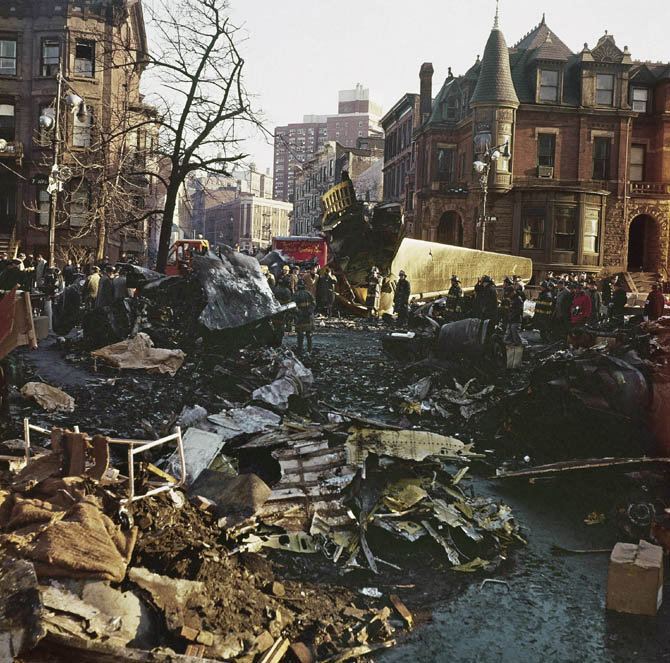 | ||
Site About a mile west of Miller Field Flight origin Chicago-O'Hare International Airport (ORD/KORD), IL Operators United Airlines, Trans World Airlines Similar United Airlines Flight 826, 1956 Grand Canyon, 1965 Carmel mid‑air co, United Airlines Flight 859, 1933 United Airlines B | ||
On Friday, December 16, 1960, a United Airlines Douglas DC-8, bound for Idlewild Airport (later renamed John F. Kennedy International airport) in New York City, collided with a TWA Lockheed L-1049 Super Constellation descending into the city's LaGuardia Airport. One plane crashed on Staten Island, the other into Park Slope, Brooklyn, killing all 128 people on both aircraft and six people on the ground. The accident became known also as the Park Slope plane crash. On Staten Island, it became known as the Miller Field crash.
Contents

At the time the death toll was the highest for a commercial aviation accident, and remained so until 1968.
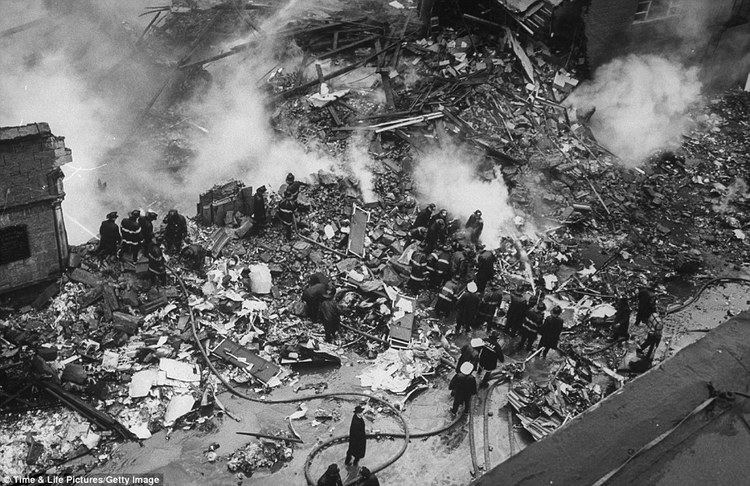
Aircraft and crews
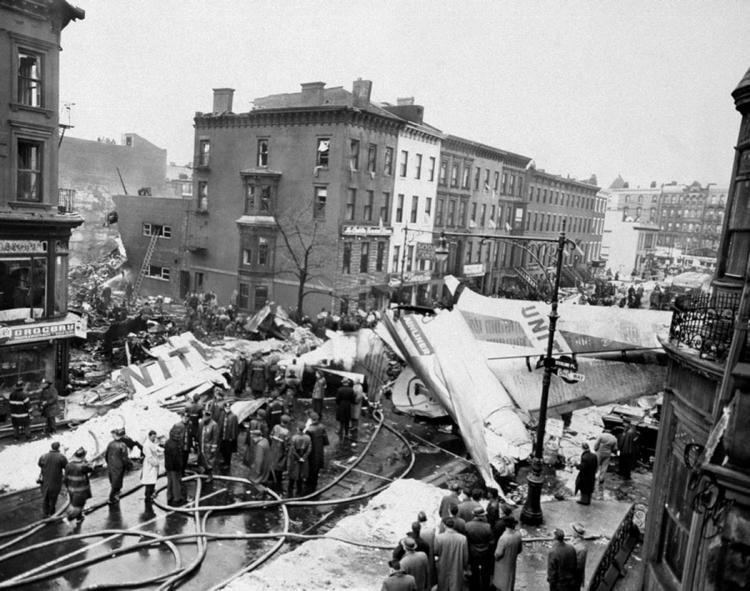
United Airlines Flight 826, Mainliner Will Rogers, registration N8013U, was a DC-8-11 carrying 84 people en route from O'Hare International Airport in Chicago to LaGuardia Airport. The DC-8 model had entered commercial service only 15 months earlier, with United as one of its launch customers. On Flight 826, the flight crew consisted of Captain Robert Sawyer, First Officer Robert Fieberg, Flight Engineer Richard Pruitt, Stewardess Annabelle Marie Bothun, Stewardess Augustine Ferrer, Stewardess Patricia Keller, and Mary Mahoney.
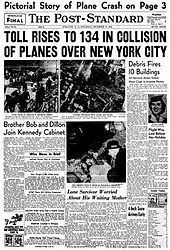
Trans World Airlines Flight 266, Star of Sicily, registration N6907C, was a Super Constellation carrying 44 people en route from Dayton and Columbus, Ohio, to Idlewild Airport (later renamed John F. Kennedy International Airport) in Jamaica, Queens. The flight crew of Flight 266 was Captain David Wollam, First Officer Dean Bowen, Flight Engineer LeRoy Rosenthal, Stewardess Margaret Gernat, and Stewardess Patrice Post.
Accident
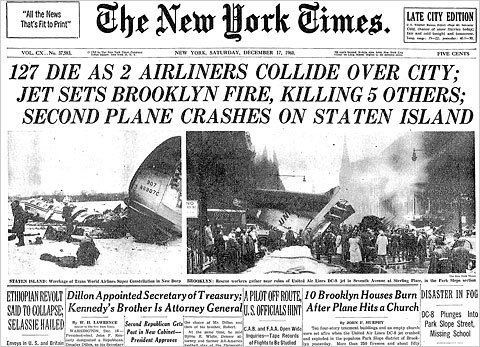
At 10:21 A.M. Eastern Time, the United aircraft advised its company radio operator that one of its VOR receivers had stopped working (although air-traffic controllers were not notified of the problem), making it harder to navigate in instrument conditions. At 10:25 A.M. Eastern Time, air traffic control issued a revised clearance for the flight to shorten its course to the Preston holding point (near South Amboy, New Jersey) by 12 miles (19 km). The United aircraft was supposed to circle the holding point at an altitude of 5,000 ft (1,500 m) at no more than 240 mph (210 kn; 390 km/h), but overshot it. United later said the Colts Neck VOR equipment was unreliable (pilots testified on both sides of the issue). ("Preston" was the point where airway V123 (the 050-radial off the Robbinsville VOR) crossed the Solberg 120-degree radial and the Colts Neck 346-degree radial).
The prevailing conditions were light rain and fog (which had been preceded by snowfall). According to information from the United DC-8's flight data recorder (the first time a "black box" had been used to provide extensive details in a crash investigation), the aircraft was 12 miles (19 km) off course and, for 81 seconds, had descended at 3,600 feet per minute (18 m/s), and slowed from more than 500 to 363 mph (434 to 315 kn; 805 to 584 km/h). It collided with the TWA Constellation, one right engine of the DC-8 impacting just ahead of the Constellation's wings. The Constellation's fuselage was torn apart violently, and the DC-8's colliding engine was torn from its pylon.
The Constellation entered a dive, with debris being blasted out of the aircraft as it spiraled to the ground. The DC-8, having lost one engine and a large part of the right wing, managed to remain in flight for another minute and a half.
The TWA plane crashed onto the northwest corner of Miller Field, at 40°34′11.07″N 74°6′11.62″W, with some sections of the aircraft landing in New York Harbor on the Atlantic Ocean side. As it spiraled down, it disintegrated, dropping at least one passenger into a tree in nearby New Dorp.
Although witnesses speculated at the time that the crew of the United plane was attempting an emergency landing either in Prospect Park (about 9 miles (14 km) away from the collision point) or at LaGuardia Airport, there is no firm evidence that the pilots had control of the DC-8 at any time after the collision. The crash left the remains of the aircraft pointed southeast towards a large open field at Prospect Park, only blocks from the crash site.
A Catholic high school teacher, from St. Augustine High School less than two blocks from the crash, testified at government hearings that he saw the faces of the DC-8 pilots as the plane approached the school, and that the wing dipped to clear the school building just before the plane crashed. This teacher's testimony was featured in a front page article and photo in the now-defunct New York Herald Tribune newspaper at the time of the hearings. A student at the school, who lived in one of the destroyed apartment buildings on the block of the crash site, reported to classmates that his entire family was in the only room of their apartment not destroyed by the crash, and they thus survived. The crash left a trench covering most of the length of the pavement on Sterling Place in the middle of the street. It shook the school so violently that occupants thought that a bomb had gone off, or the building's boiler had exploded.
There was no audible voice radio contact with traffic controllers from either plane after the collision, although LaGuardia had begun tracking an incoming, fast-moving, unidentified plane from Preston toward the LaGuardia "Flatbush" outer marker.
The DC-8 crashed into the Park Slope section of Brooklyn at the intersection of Seventh Avenue and Sterling Place(40°40′38″N 73°58′25″W), scattering wreckage and setting fire to ten brownstone apartment buildings, the Pillar of Fire Church, the McCaddin Funeral Home, a Chinese laundry, and a delicatessen. Six people on the ground were killed: Wallace E. Lewis, the church's 90-year-old caretaker; Charles Cooper, a sanitation worker who was shoveling snow; Joseph Colacino and John Opperisano, who were selling Christmas trees on the sidewalk; Dr. Jacob L. Crooks, who was out walking his dog; and Albert Layer, the owner of the butcher shop located just off Seventh Avenue on Sterling Place.
Sole survivor
The only initial survivor of the tragedy was 11-year-old Stephen Lambert Baltz (born January 9, 1949) of Wilmette, Illinois. He was traveling unaccompanied aboard the United flight to meet his mother and sister, who had flown to New York the day before, while his father was due to join the family on a later flight. The family was planning to spend Christmas in Yonkers with relatives.
As the DC-8 impacted with the ground, Baltz was thrown from the plane into a snowbank, where local residents rolled him in the snow to extinguish his burning clothing. Though alive and conscious following the crash, he was badly burned and suffering from burning fuel aspiration.
Baltz was taken to New York Methodist Hospital, 15 blocks from the crash site down Seventh Avenue. From his hospital bed, he told rescuers that moments before the collision, he had looked out the window at the snow falling on the city: "It looked like a picture out of a fairy book. It was a beautiful sight".
Pictures of Baltz appeared on many front pages around the world such as the Syracuse Post-Standard, repeating a story from the Associated Press in which he expressed concern about his mother, who was waiting for him at the airport. He gave the only passenger description of the crash: "I heard a big noise while we were flying. The last thing I remember was the plane falling".
He died of pneumonia the next day. Hospital staff had been unaware that Baltz's lungs had been seared by burning jet fuel, a life-threatening condition which was later revealed at autopsy.
An 8 by 14 in (200 by 360 mm) commemorative plaque on the rear wall of the hospital's Phillips Chapel, encrusted with four U.S. dimes and five U.S. nickels, memorializes Baltz and all "135 Victims of The Aircraft Disaster". The coins were found in the boy's pocket and placed in the chapel's donation box after his death by his father, an Admiral Corporation vice president.
Aftermath
With a death toll of 134, the accident was the deadliest U.S. commercial aviation disaster at the time, exceeding the 1956 Grand Canyon mid-air collision's toll of 128 fatalities. Both collisions involved a TWA aircraft and a United aircraft. The death toll also surpassed the 1953 Tachikawa air disaster as the deadliest aviation disaster worldwide, and would remain so until the 1968 Kham Duc C-130 shootdown, which killed 155 people.
Filmmaker and critic Hollis Frampton was scheduled to be on the United flight, but decided to delay his return to New York for one day in order to see a retrospective of the work of Edward Weston in Minneapolis; he said of this decision that he was "never...able to decide whether Weston tried to kill me, or saved my life."
Celebrated mountaineer Edmund Hillary was also scheduled on the flight, but was late and did not board the aircraft.
While most airlines retire flight numbers that have been involved in a fatal crash, United continued to use the Flight 826 designation for many years. In 1997, another Flight 826 was involved in an incident approximately 90 minutes after leaving Tokyo Narita Airport bound for Honolulu. The flight was disrupted by clear-air turbulence, which caused the aircraft to drop less than 100 feet, but resulted in injuries to 18 people. The plane returned to Tokyo safely, but one Japanese woman later died of her injuries. United no longer uses the Flight 826 designation.
